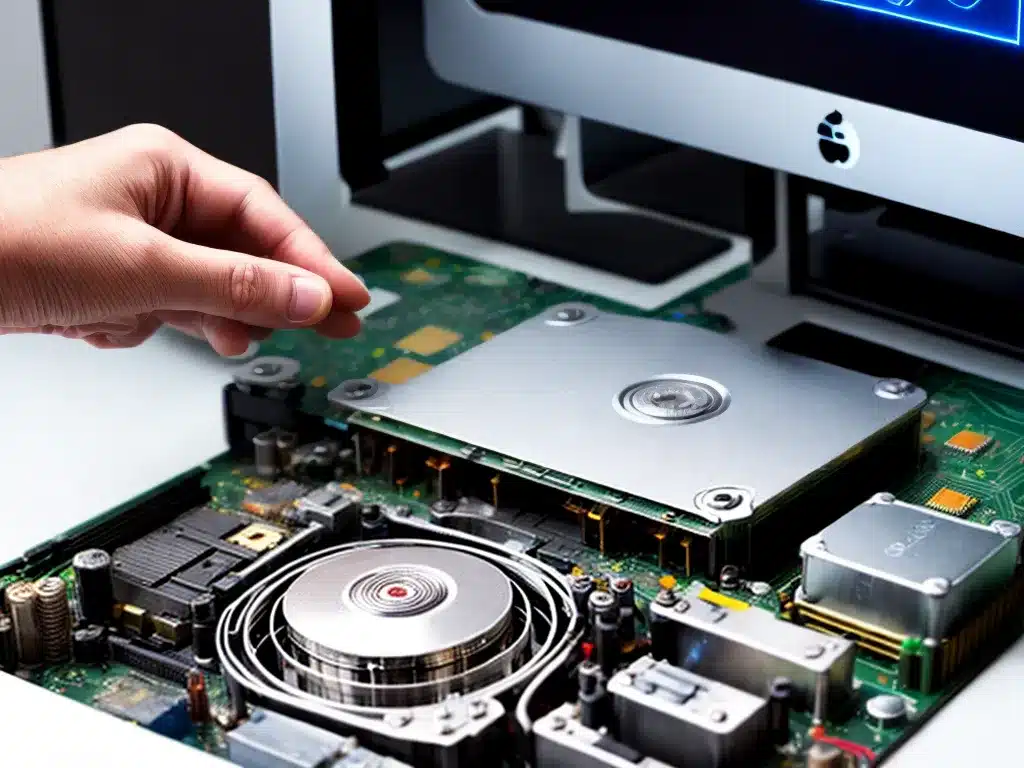
Having a slow computer can be extremely frustrating. There are many potential causes for reduced performance, but thankfully there are also a number of ways to troubleshoot and fix the issue. In this comprehensive guide, I will outline some of the most common reasons your computer might be slow, along with actionable solutions for restoring speed.
Troubleshooting the Source of the Problem
Before attempting to fix a slow computer, it’s important to try and diagnose what exactly is causing the performance degradation. Here are some of the most common culprits:
Outdated or Conflicting Drivers
Device drivers act as the software interface between your operating system and hardware components like your video card, printer, mouse, etc. Outdated or corrupt drivers can slow things down and cause conflicts.
Solution: Open your device manager utility and look for any devices showing warning signs. Update any outdated drivers, or uninstall/reinstall if they are corrupted.
Too Many Startup Programs
Startup programs are applications configured to launch automatically when you boot your PC. The more you have, the longer it takes for your system to start up and stabilize.
Solution: Open the startup tab in your task manager and disable any unnecessary programs. This will reduce boot time and free up system resources.
Malware, Viruses, or Other Infections
Malicious software like viruses, trojans, spyware, and adware can definitely slow computers down by consuming RAM, CPU cycles, and network bandwidth in the background.
Solution: Run full system scans using updated antivirus and anti-malware tools to detect and remove any infections.
Fragmented Hard Drive
As saved files get modified and deleted over time, leftover data fragments on your hard drive can lead to inefficient read/write times.
Solution: Use the built-in disk defragmentation and optimization utilities in your operating system to clean things up.
Too Many Running Apps and Browser Tabs
If you tend to have many programs, browser tabs, etc running simultaneously, it puts high demand on your computer’s RAM and CPU.
Solution: Try closing apps you aren’t actively using. Look for unnecessary processes you can quit in your task manager as well.
Optimizing System Resources for Better Performance
If your computer is still slow after troubleshooting, there are some general optimization steps you can take to help maximize system resource efficiency:
Upgrade RAM
Increasing your RAM (Random Access Memory) is one of the best ways to improve overall system responsiveness. More RAM enables your computer to handle multitasking and run demanding apps/games more smoothly.
Perform a Clean Reinstall of Your OS
Starting fresh with a clean operating system install clears out accumulated digital junk like temp files, broken shortcuts, registry errors, etc.
Use a Solid State Drive (SSD)
Replacing a traditional HDD (hard disk drive) with a faster SSD (solid state drive) significantly reduces boot times and speeds up file transfers/loading.
Disable Visual Effects
Disabling fancy visual effects like animations and transparencies frees up resources that can be better allocated to actual system processes and programs.
Close Background Apps and Browser Tabs
Try to avoid overtaxing your computer’s CPU and RAM by keeping resource-hungry apps and dozens of browser tabs closed when not needed.
Update Software and Drivers
Maintaining up-to-date software, drivers, and operating systems improves compatibility, patches security holes, and often provides performance enhancements.
Best Practices for Keeping Your Computer Running Fast
Here are some good general habits for ensuring your system operates smoothly over the long run:
-
Perform regular malware scans.
-
Clean out your drive and defragment it once a month.
-
Never pile up too many files on your desktop as clutter slows things down.
-
Limit startup programs to essential services only.
-
Disable visual effects like animations if you don’t need them.
-
Monitor your processes and quit resource hogs when not needed.
-
Keep your operating system, browser, and drivers fully updated.
-
Replace mechanical HDDs with faster solid state drives.
-
Upgrade components like RAM, CPU, and graphics card over time.
When to Consider Buying a New Computer
If your machine is very old and you’ve tried all the usual troubleshooting steps to no avail, it may be time to consider purchasing a new system altogether.
Signs that a computer is too outdated to efficiently upgrade:
- Hardware components are many years old.
- Cannot support newer operating systems.
- Runs very hot or has other physical issues.
- Unable to have components upgraded cost-effectively.
Although aging computers can often be revived with upgrades like more RAM or an SSD, at a certain point it makes more economic and practical sense to invest in new equipment.
Conclusion
There are a wide range of reasons why computers start to feel slow over time. After properly diagnosing the root cause using the troubleshooting tips outlined here, fixing the issue becomes much easier. Combining system maintenance, optimizing software settings, and upgrading hardware are the most effective ways to restore lost performance and speed. With proper care, even older computers can usually stay fast for many years. But when the time eventually comes, investing in an entirely new system may be the best option.












